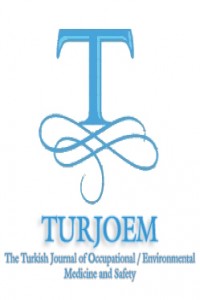Öz
This article is
to discuss therapeutic effects of botulinum toxin in medical fields.
Botulinum toxin
is a neurotoxin which is produced by the gram (+) anaerobic bacteria
(Clostridium botulinum). It was first discovered as the cause of systemic food
poisoning (botulism) in the late 19th
century.
Botulinum is the most acutely lethal toxin
known, with an estimated human median lethal dose (LD50) of 1.3–2.1 ng/kg
intravenously or intramuscularly and 10–13 ng/kg when inhaled. Some food
products such as honey can contain amounts of the bacteria. Botulism is
nevertheless known to be transmitted through canned foods not cooked correctly
before canning or after can opening, and so is preventable.
Botulinum toxin
has 7 subgroups (A, B, C, D, E, F, G). Nowadays A and B types are used in
treatment.
In December 1989
type A toxin was giving the license and approved by the Food and Drug
administration and it has started being used widely to treat blepharospasm and
strabismus. In December 2000 A and B types were approved to be used to treat
cervical dystonia. As the effect of (efficacy) botulinum toxin was recognized
by clinicians researches about it's therapeutic effects have been made widely
an as for now it's used in a wide range of medical cases varying from smooth
muscle diseases (gastrointestinal and genitourinary), different types at
skeleton muscle diseases to cosmetics to treat wrinkles the cause of aging.
Anahtar Kelimeler
Kaynakça
- Büşra CUMHUR
- Ankara University, Institute of Forensic Sciences, Forensic Biology 06590 Dikimevi, Ankara, Turkey
Öz
Kaynakça
- Büşra CUMHUR
- Ankara University, Institute of Forensic Sciences, Forensic Biology 06590 Dikimevi, Ankara, Turkey
Ayrıntılar
| Bölüm | Articles |
|---|---|
| Yazarlar | |
| Yayımlanma Tarihi | 16 Şubat 2017 |
| Yayımlandığı Sayı | Yıl 2017 Cilt: Volume 2 Sayı: İssue 1 (1) - 2.İnternational Congress Of Forensic Toxicology |

